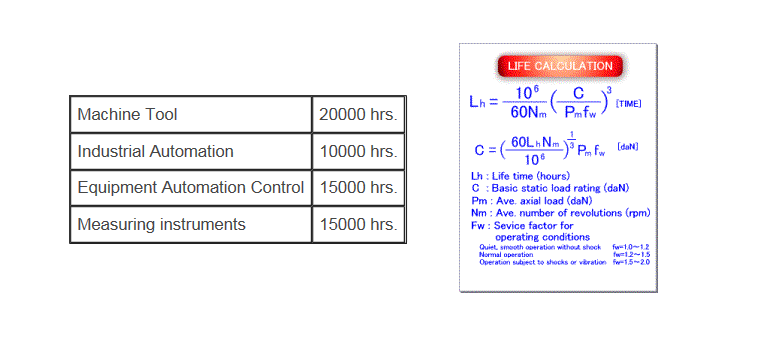How is ball screw life calculated?
The Life of a ball screw is defined in a unit as the total number of rotations reached before surface-flaking of the balls or the ball groove starts to appear, due to repeated stress on their materials, and can be calculated with the Basic Dynamic Load Rating (C).
It is not advisable to use the Basic Dynamic Load rating as a basis for a life calculation where the application requires the ball screw to operate at less than 10 rpm, due to large errors in predicted results. For this reason, use the Basic Static Load Rating (C0) when calculating for low rotational speed applications. The Basic Static Load Rating is: an axially applied static load that causes a permanent deformation on steel balls and screw groove as a sum, in the amount of 1/10,000th of the ball diameter. The life of a ball screw can be calculated. Over-designing the life parameter will result in unnecessarily high costs and excessive size of the mechanism. Therefore, it is important to properly size the ball screw based on its life calculations. The following is the typically accepted guideline.

The following Surface-Flaking progression of ball screws beyond its life expectancy has been observed as the result of Fatigue Life Tests.
Some round "pitting" 0.2mm in diameter appear on the surface of the ball nut groove initially, followed by appearance and propagation of "cracks", and finally resulting in "flaking" of the entire surface of the ball screw shaft.

* The above pictures in reference to Dr. Izawa "Ball screw and its applied technology.
